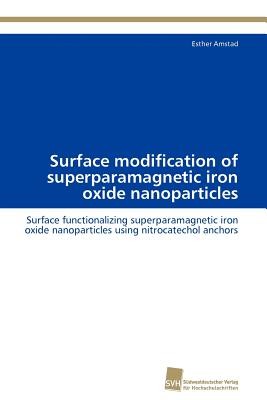
- We will send in 10–14 business days.
- Author: Amstad Esther
- Publisher: Sudwestdeutscher Verlag Fur Hochschulschriften AG
- Year: 2012
- Pages: 388
- ISBN-10: 3838117212
- ISBN-13: 9783838117218
- Format: 15.2 x 22.9 x 2.2 cm, softcover
- Language: English
- SAVE -10% with code: EXTRA
Surface modification of superparamagnetic iron oxide nanoparticles (e-book) (used book) | bookbook.eu
Reviews
Description
Biomedical applications of superparamagnetic iron oxide nanoparticles (NPs) for therapeutic and diagnostic purposes require NPs to be stable under physiologic conditions. This can only be achieved if NPs are sterically stabilized with appropriate dispersants that bind irreversibly to the iron oxide surface. Tight control over the dispersant layer not only prevents NP agglomeration but additionally paves the way to tailor NP size, charge, the type and density of functionalities presented at the NP surface. These factors are especially important for the in vivo performance of NPs. One possibility to sterically stabilize NPs is to graft low molecular weight dispersants to these surfaces. Stabilization of NPs with low molecular weight dispersants relies on high affinity anchors that firmly bind spacers and functionalities to the NP surface at high density. This thesis compares the ability of different anchors to firmly bind low molecular weight dispersants to Fe3O4 NP surfaces and investigates the stability of NPs sterically stabilized with different dispersants. Furthermore, the performance of these sterically stabilized iron oxide NPs in selected biomedical applications is addressed.
EXTRA 10 % discount with code: EXTRA
The promotion ends in 20d.19:32:51
The discount code is valid when purchasing from 10 €. Discounts do not stack.
- Author: Amstad Esther
- Publisher: Sudwestdeutscher Verlag Fur Hochschulschriften AG
- Year: 2012
- Pages: 388
- ISBN-10: 3838117212
- ISBN-13: 9783838117218
- Format: 15.2 x 22.9 x 2.2 cm, softcover
- Language: English English
Biomedical applications of superparamagnetic iron oxide nanoparticles (NPs) for therapeutic and diagnostic purposes require NPs to be stable under physiologic conditions. This can only be achieved if NPs are sterically stabilized with appropriate dispersants that bind irreversibly to the iron oxide surface. Tight control over the dispersant layer not only prevents NP agglomeration but additionally paves the way to tailor NP size, charge, the type and density of functionalities presented at the NP surface. These factors are especially important for the in vivo performance of NPs. One possibility to sterically stabilize NPs is to graft low molecular weight dispersants to these surfaces. Stabilization of NPs with low molecular weight dispersants relies on high affinity anchors that firmly bind spacers and functionalities to the NP surface at high density. This thesis compares the ability of different anchors to firmly bind low molecular weight dispersants to Fe3O4 NP surfaces and investigates the stability of NPs sterically stabilized with different dispersants. Furthermore, the performance of these sterically stabilized iron oxide NPs in selected biomedical applications is addressed.


Reviews